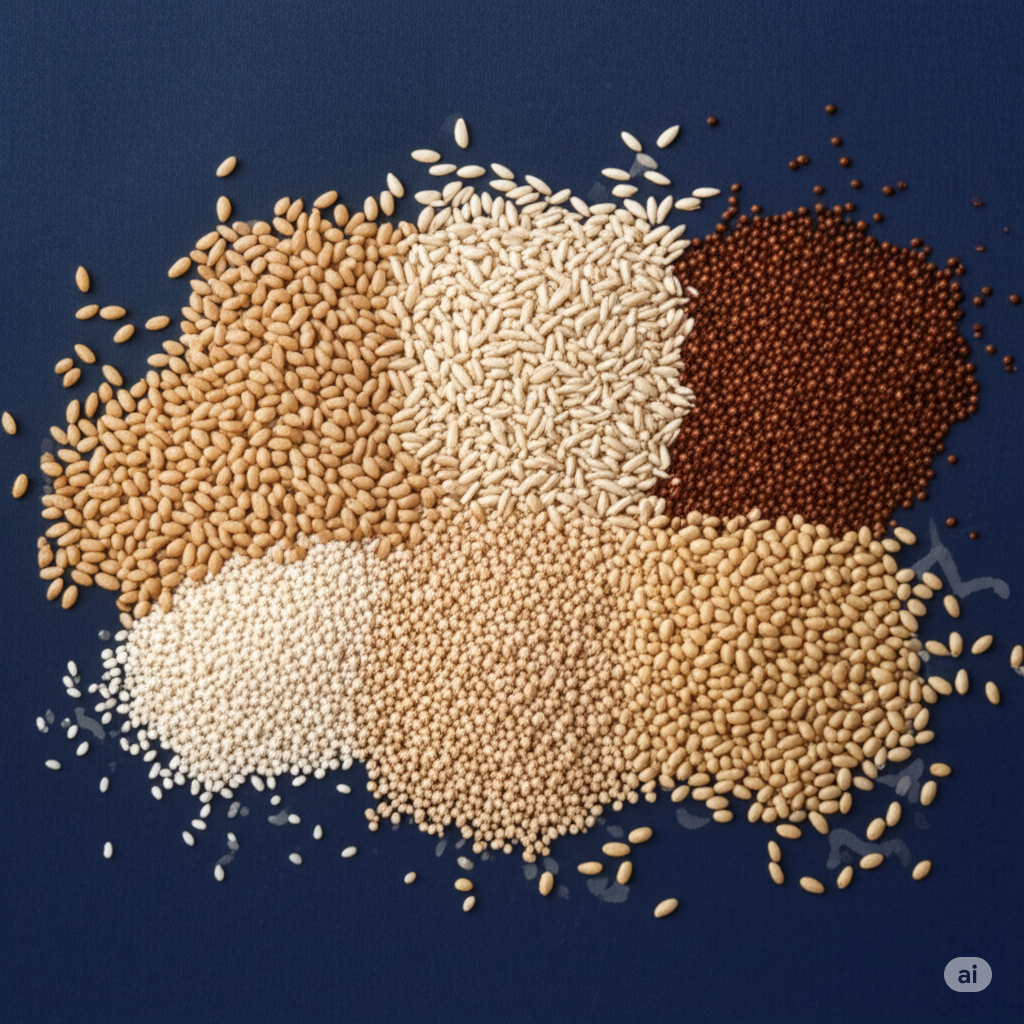Are All Carbs Created Equal? The Good, the Bad, and the GI-Friendly
Trulo team
8/15/20254 min read


In a land that loves its rotis, rice, and everything in between, carbohydrates (carbs) hold a special place in our diets here in India. But with so much talk about “good carbs” and “bad carbs,” it’s easy to feel confused. Are all those chapatis and biryanis really the same for our bodies?
At Trulo, we believe in empowering you with knowledge, so you can make informed and joyful food choices. Let's dive into the fascinating world of carbohydrates and understand why, when it comes to our metabolic health, all carbs are definitely not created equal.
The Carb Spectrum: From Simple to Complex
Think of the carbohydrate family as a spectrum. On one end, we have simple carbohydrates, often referred to as sugars. These include the natural sugars found in fruits and milk, as well as added sugars in processed foods and sugary drinks. They are made up of one or two sugar molecules and are quickly digested and absorbed by the body.
On the other end, we have complex carbohydrates, which are longer chains of sugar molecules linked together. These are primarily found in whole grains, legumes, and starchy vegetables. Because of their complex structure, they take longer for the body to break down.
And right in the middle of this spectrum lies the crucial difference that impacts our health: fiber. Fiber is a type of carbohydrate that our bodies can't digest. It's a key component of many complex carbohydrates and plays a vital role in slowing down digestion and absorption.
The "Bad" Carbs: Refined and Ready to Spike
So, where do the “bad” carbs fit in? These are often refined carbohydrates. When grains like wheat and rice are refined, the bran (the fiber-rich outer layer) and the germ (the nutrient-packed core) are removed, leaving behind mostly the starchy endosperm.
Think of white bread, white rice, maida-based products (like many biscuits and snacks), and sugary cereals. These refined carbs are quickly broken down into glucose, causing a rapid spike in your blood sugar levels. As we discussed in our previous blog, these sudden spikes can lead to energy crashes, mood swings, and over time, contribute to insulin resistance and other metabolic health issues.
Many popular Indian snacks and sweets also fall into this category due to their high content of refined flour and added sugars. While delicious for a treat, frequent consumption can put our metabolic health on a rollercoaster.
The "Good" Carbs: Whole and Health-Boosting
Now for the heroes of our carbohydrate story: whole grains. These are carbohydrates in their complete, unprocessed form. They retain all three parts of the grain: the fiber-rich bran, the nutrient-dense germ, and the energy-providing endosperm.
Examples of wonderful whole grains include:
Millets: Jowar (Sorghum), Bajra (Pearl Millet), Ragi (Finger Millet), and more – staples in many Indian regional cuisines!
Whole Wheat: Atta used for making whole wheat chapatis.
Brown Rice: A less processed alternative to white rice, retaining more fiber and nutrients.
Oats: A versatile and fiber-packed option for breakfast or snacks.
Quinoa: A complete protein and a good source of fiber.
Because whole grains are rich in fiber, they are digested more slowly. This leads to a gradual and sustained release of glucose into the bloodstream, providing you with stable energy throughout the day. Moreover, the fiber in whole grains aids digestion, helps you feel fuller for longer (which can assist with weight management), and contributes to good gut health.
The GI Factor: Your Guide to Carb Choices
This is where the Glycemic Index (GI) comes into play as a helpful tool. As you might remember, GI ranks carbohydrate-containing foods based on how quickly they raise blood sugar levels.
High-GI refined carbs cause rapid spikes.
Low-GI whole grains and fiber-rich foods cause a more gradual rise.
By choosing more low-GI options, you're essentially opting for carbohydrates that are kinder to your metabolic health, providing sustained energy and preventing those energy crashes.
Making Smart Carb Choices: An Indian Context
So, how can you make smarter carb choices in your daily Indian diet? Here are a few simple swaps:
Choose Whole Grain Atta: Opt for whole wheat flour for your chapatis and rotis instead of maida.
Embrace Millets: Incorporate millets like jowar, bajra, and ragi into your meals in the form of rotis, khichdi, or other regional preparations.
Go for Brown Rice: When choosing rice, opt for brown rice over white rice whenever possible.
Explore Whole Grain Snacks: Look for snacks made with whole grains, like millet-based crackers or roasted chana.
Be Mindful of Refined Flour: Limit your intake of products made primarily with maida, such as biscuits, pastries, and certain fried snacks.
Prioritize Fiber-Rich Foods: Include plenty of vegetables, fruits, and lentils in your diet, as they naturally contribute to a lower overall glycemic impact of your meals.
Trulo's Promise: Good Carbs, Deliciously Done
At Trulo, we're passionate about making low-GI eating not just healthy, but also incredibly delicious and relevant to Indian tastes. Our products are crafted with a focus on whole grains, fiber-rich ingredients, and minimal refined carbs, so you can enjoy the flavors you love without the blood sugar rollercoaster.
We believe that understanding the difference between refined and whole-grain carbs is the first step towards a healthier and more energized you and your family. By making informed choices, you can fuel your body with the "good" carbs that provide sustained energy and support your long-term metabolic well-being.
Stay tuned for more insights and delicious low-GI options from the Trulo family!
